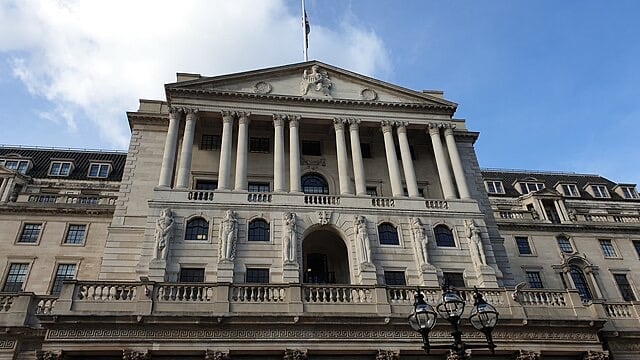In a welcomed turn of events, the International Monetary Fund (IMF) has revised its growth forecast for the United Kingdom in 2025, projecting a slightly stronger economic performance than previously anticipated. Despite the positive outlook, the IMF has issued a stern warning: looming international tariffs, particularly those originating from the United States, could derail these gains if trade tensions escalate further.
This dual-tone assessment reflects the complex reality the UK faces in the post-Brexit, post-pandemic global economy. On one hand, domestic resilience and a rebound in certain key sectors are fueling optimism. On the other hand, the fragile global trade environment—exacerbated by political shifts in major economies—poses a significant risk.
With inflation on the rise and interest rate policies still in flux, the IMF’s report acts both as a pat on the back and a nudge toward caution. Let’s break down what this means for businesses, consumers, and policymakers alike.
Introduction
The IMF’s latest economic outlook for the UK has caught the attention of financial analysts, business leaders, and policymakers. In an unexpected revision, the fund now predicts the UK economy will grow by 1.2% in 2025, up from the earlier estimate of 1.1%. While a 0.1 percentage point increase might seem minor on the surface, it is a meaningful adjustment that reflects a growing confidence in the UK’s economic trajectory—at least in the short term.
However, this optimism is tempered by real-world concerns. The IMF has paired its upgrade with a warning: global trade tensions, particularly the prospect of fresh tariffs from the United States, could hinder the UK’s economic progress. This highlights a recurring theme in economic forecasting today—while fundamentals might be improving, geopolitics remains a wild card.
The UK’s economy is attempting to chart a course between domestic recovery and global uncertainty. Key economic indicators are showing improvement, but inflation is climbing again, and the future of international trade agreements remains murky. This article dives into the details behind the IMF’s forecast, the risks ahead, and what all this means for the average Briton.
IMF Upgrades UK Economic Growth Forecast
In its May 2025 update, the International Monetary Fund increased its forecast for UK economic growth to 1.2%. This is a modest yet notable upgrade from the 1.1% prediction issued just a month earlier in April. Although this figure is still below the 1.6% growth predicted earlier in January, it reflects improved performance in several key areas of the economy.
The upward revision was largely driven by a stronger-than-expected first quarter, which saw increased consumer spending, better job market figures, and rising confidence among small businesses. Government fiscal policies, particularly targeted investments in infrastructure and green energy, also contributed to this boost.
What’s interesting is that this forecast comes at a time when many developed economies are grappling with stagnation. Among G7 nations, the UK’s current inflation-adjusted growth positions it somewhere in the middle of the pack—behind the U.S. and Canada, but ahead of Germany and Japan.
Despite the positive revision, the IMF’s message is clear: celebrate the progress, but don’t get too comfortable. The UK economy remains vulnerable to external shocks, especially from trade disruptions and currency volatility.
Underlying Drivers of Economic Growth
So what exactly is fueling this modest economic upturn in the UK? Let’s take a closer look at the main contributors.
- Consumer Spending Rebound:
UK households have started spending again, particularly in the services sector. From hospitality to entertainment, consumer-facing industries are reporting higher sales. This is a crucial development, as consumption makes up over 60% of the UK’s GDP. - Public Sector Investment:
The government’s push on infrastructure—especially green transport and housing projects—has created new jobs and boosted demand in related sectors. These investments not only provide immediate economic benefits but also build long-term resilience. - Financial Services Stability:
Despite global banking volatility, the UK’s financial sector has remained relatively steady. London retains its role as a global financial hub, and recent post-Brexit regulations have managed to retain international investor confidence. - Technology and Innovation:
The UK’s tech industry, particularly in fintech and AI, continues to draw significant venture capital. This inflow of investment is helping startups scale rapidly and contribute meaningfully to GDP.
These elements combine to create a foundation for growth. However, economists warn that these gains are still vulnerable to external pressures, especially those related to international trade.
The Shadow of Trade Tariffs
Despite the positive momentum, the IMF has been vocal about a major risk factor: escalating trade tariffs. The fund specifically pointed to trade tensions with the U.S., where tariff proposals have been floated as part of a broader “America First” economic strategy under President Trump’s renewed administration.
Though some of these tariffs have been delayed until July 8, the uncertainty alone is enough to cast a shadow over economic forecasts. The IMF estimates that if these tariffs go into effect and persist, they could shave 0.3 percentage points off UK GDP by 2026.
The concern isn’t just hypothetical. Tariffs on UK exports, particularly in sectors like automotive, steel, and agriculture, could severely hurt local manufacturers and farmers. In a tightly woven global supply chain, even small disruptions can create ripple effects that extend to consumer prices, job markets, and business investment.
The IMF’s message is simple: while growth is real, it is fragile. A protectionist shift in global trade policy could undo the progress made over the past year, putting renewed strain on an economy still finding its post-Brexit footing.



